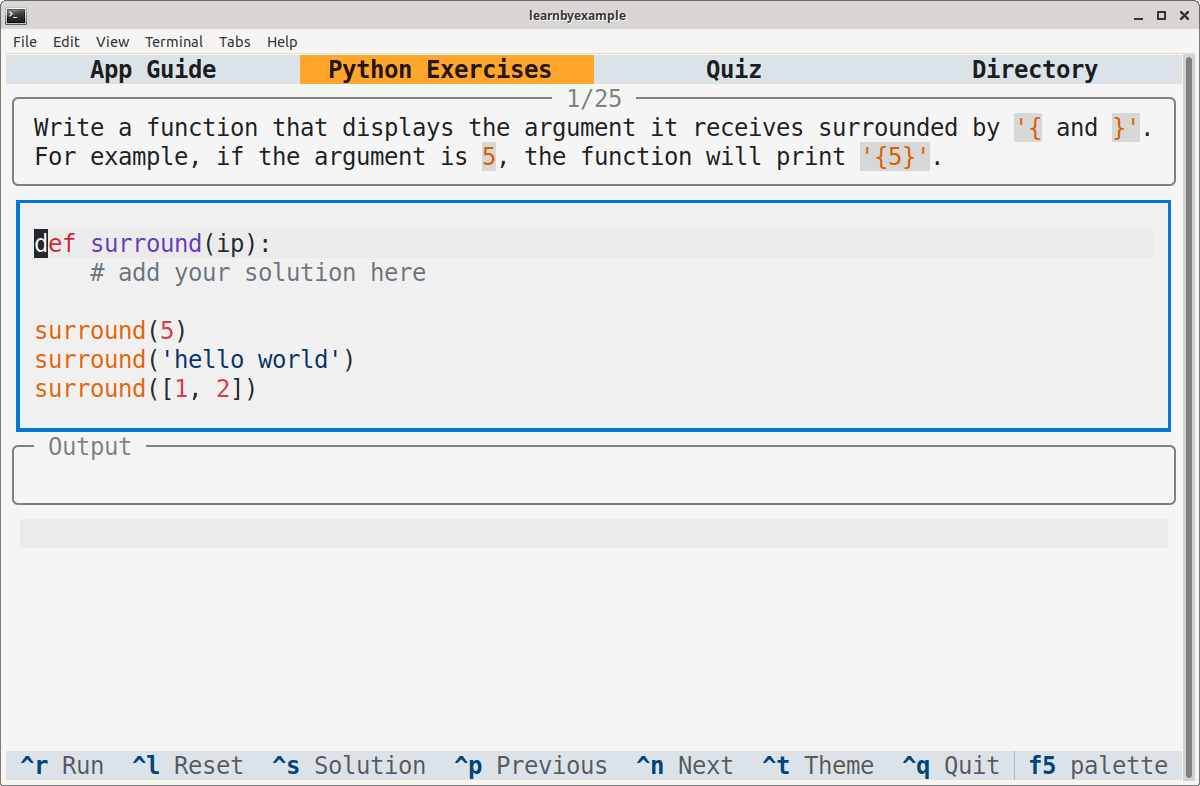100 Page Python Intro book announcement
Hello!
I am pleased to announce a new version of my 100 Page Python Intro ebook. This book is a short, introductory guide for the Python programming language. This book is well suited:
- As a reference material for Python beginner workshops
- If you have prior experience with another programming language
- If you want a complement resource after reading a Python basics book, watching a video course, etc
Release offers🔗
To celebrate the new release, you can download PDF/EPUB versions of the ebook for FREE till 02-Jan-2025. You can still pay if you wish ;)
- https://leanpub.com/100pagepythonintro/c/YearEndSale
- https://learnbyexample.gumroad.com/l/100pagepythonintro
Two of my bundles are on sale as well:
- All 13 Books Bundle — $15 (normal price $32), learn Regular Expressions, Linux CLI tools, Python, Vim and more!
- Awesome Regex Bundle — $10 (normal price $20), Python, Ruby, JavaScript, BRE/ERE, PCRE and Vim regular expressions
What's new?🔗
- Python version updated to 3.13.0
- Added more exercises and you can now practice some of them using this interactive TUI app
- Descriptions and external links were updated/corrected
- Updated Acknowledgements section
- Code snippets related to info/warning sections will now appear as a single block
- New cover image
- Images centered for EPUB format
Videos🔗
Check out my programming tips covering Python, command line tools and Vim:
Testimonials🔗
It's very thorough, written with care, and presented in a way that makes sense. Even as an intermediate Python programmer, I found use in this book.
— feedback by Andrew Healey on an early draft of "100 Page Python Intro" mentioned in this Hacker News thread
Interactive TUI app🔗
I also wrote an interactive TUI app based on some of the exercises from the ebook. Reference solutions are also provided.

Table of Contents🔗
- Preface
- Introduction
- Numeric data types
- Strings and user input
- Defining functions
- Control structures
- Importing and creating modules
- Installing modules and Virtual environments
- Exception handling
- Debugging
- Testing
- Tuple and Sequence operations
- List
- Mutability
- Dict
- Set
- Text processing
- Comprehensions and Generator expressions
- Dealing with files
- Executing external commands
- Command line arguments
Web version🔗
You can also read the book online here: https://learnbyexample.github.io/100_page_python_intro/introduction.html.
GitHub repo🔗
Visit https://github.com/learnbyexample/100_page_python_intro for programs, example files, markdown source and other details about the book.
See also my blog post on how to customize
pandocfor generating beautiful PDF/EPUB versions from GitHub style markdown.
Feedback🔗
I would highly appreciate it if you'd let me know how you felt about this book. It could be anything from a simple thank you, Gumroad rating, pointing out a typo, mistakes in code snippets, which aspects of the book worked for you (or didn't!) and so on. Reader feedback is essential and especially so for self-published authors.
You can reach me via:
- Issue Manager: https://github.com/learnbyexample/100_page_python_intro/issues
- E-mail:
echo 'bGVhcm5ieWV4YW1wbGUubmV0QGdtYWlsLmNvbQo=' | base64 --decode - Twitter: https://twitter.com/learn_byexample
Happy learning :)